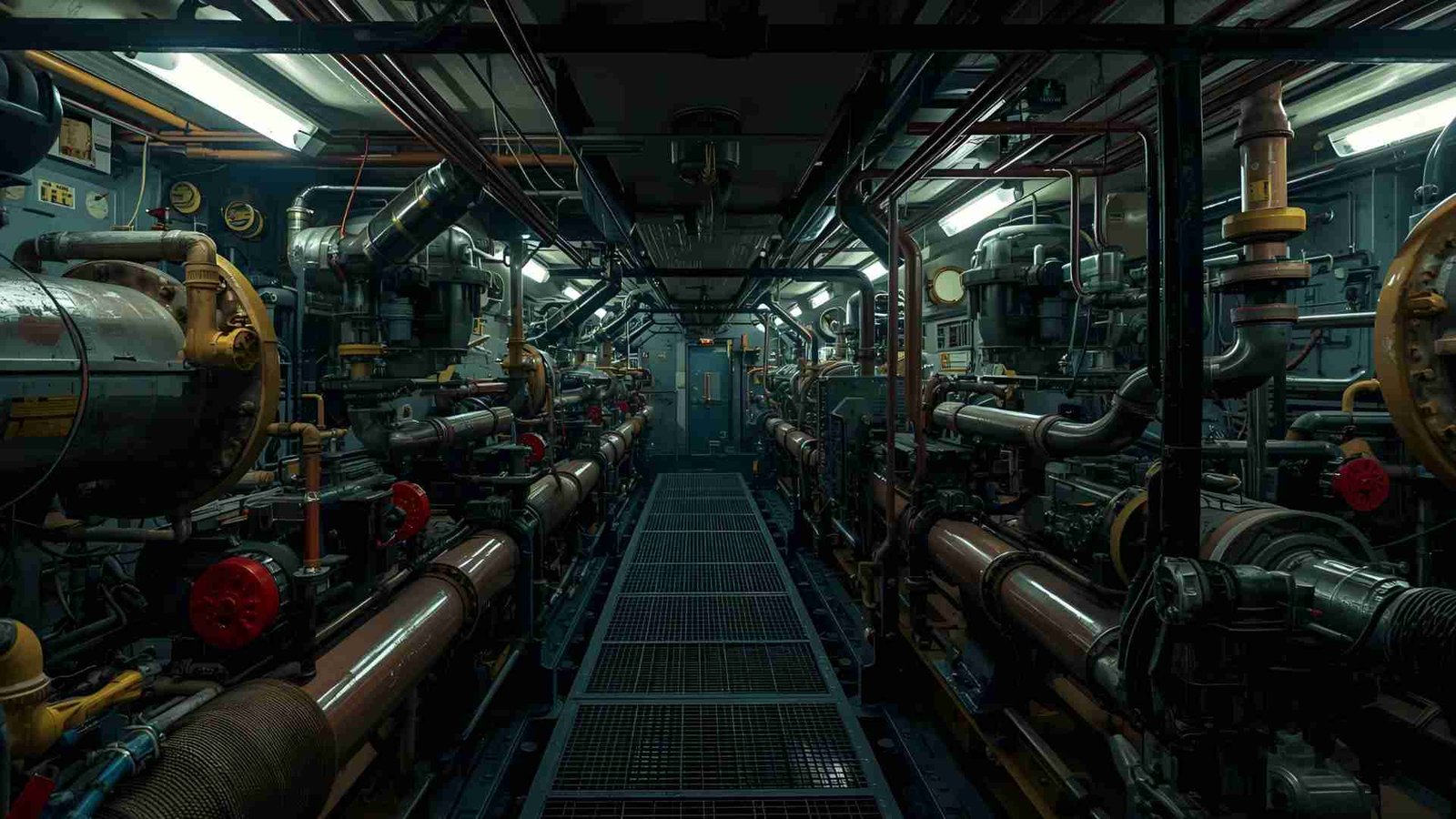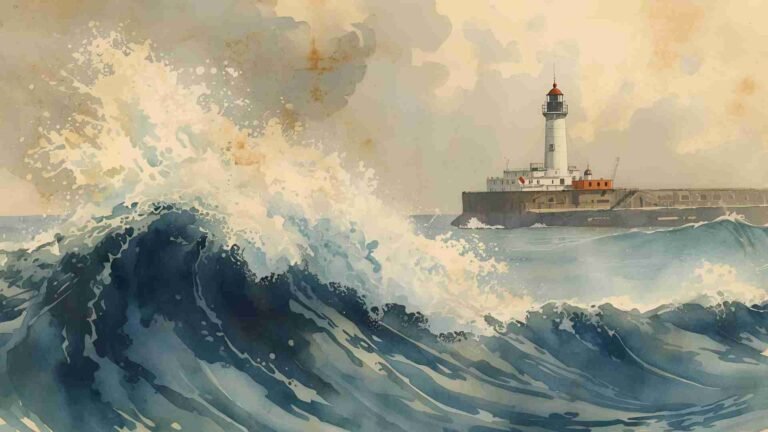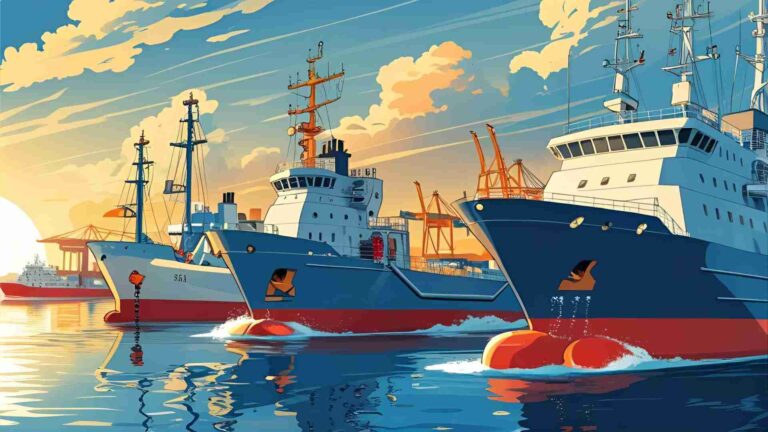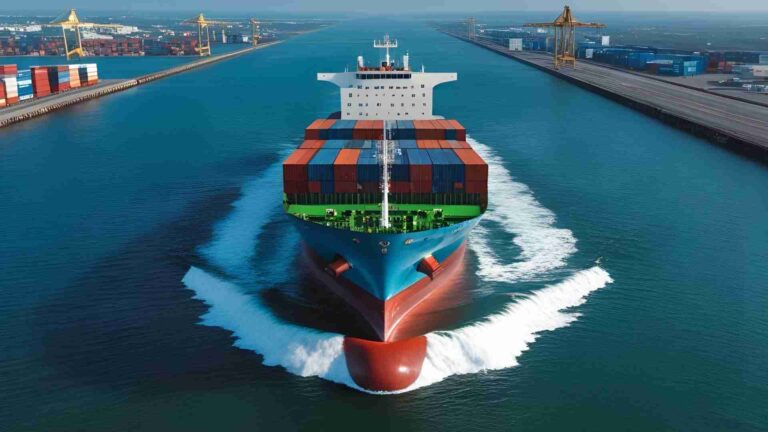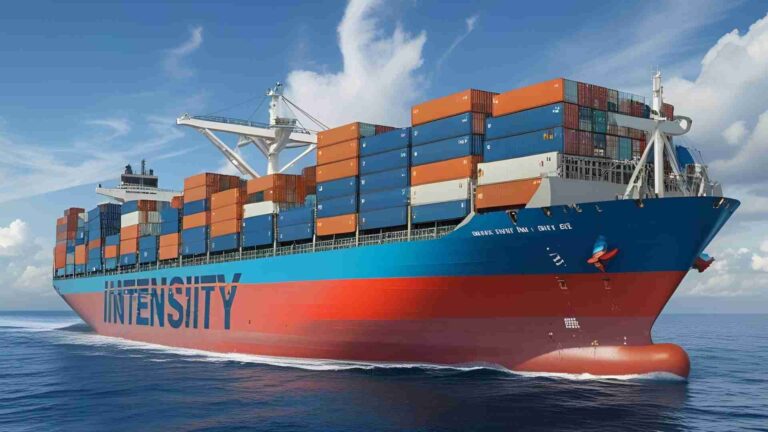Air Compressors in Ships’ Engine Rooms
Air compressors are the unsung heroes of a ship’s engine room, delivering high-pressure air to power critical systems, from starting massive marine engines to operating pneumatic tools and control systems. These robust machines are integral to the safe and efficient operation of commercial vessels, ensuring that ships can navigate the seas reliably. This comprehensive guide delves into the types, functions, components, operational procedures, maintenance, and troubleshooting of air compressors in ships’ engine rooms, providing a detailed look at their indispensable role in the maritime industry.
Introduction to Air Compressors in Maritime Applications
In the complex ecosystem of a ship’s engine room, air compressors serve as vital components, transforming ambient air into high-pressure energy to drive essential operations. Whether it’s kickstarting a ship’s main propulsion engine, powering pneumatic tools for maintenance, or ensuring precise control of automated systems, air compressors are the backbone of many onboard processes. Their ability to operate in harsh marine environments—marked by high humidity, saltwater exposure, and constant vibrations—makes them uniquely suited for maritime applications.
Marine air compressors are designed to withstand corrosion and deliver consistent performance under demanding conditions. They compress air to pressures as high as 30 bars or more, storing it in robust air receiver tanks for use across various systems. This article explores the different types of air compressors, their critical functions, key components, maintenance practices, and troubleshooting techniques, offering insights into their role in ensuring smooth and safe maritime operations.
Types of Air Compressors in Ships’ Engine Rooms
Marine air compressors come in various designs, each tailored to specific applications based on pressure requirements, flow rates, and operational demands. The three primary types found in ships’ engine rooms are reciprocating, rotary screw, and centrifugal compressors, with additional classifications based on their specific roles onboard.
1. Reciprocating Air Compressors
Reciprocating air compressors are the most common type used in marine applications, particularly for high-pressure tasks like starting main and auxiliary engines. These compressors operate using a piston within a cylinder, driven by a crankshaft, to compress air. Their robust design and ability to generate pressures of 30 bars or higher make them ideal for critical systems.
- Single-Acting vs. Double-Acting: Single-acting compressors compress air on one side of the piston, while double-acting compressors use both sides, increasing efficiency and output. Double-acting reciprocating compressors are prevalent in marine engine starting systems due to their high-pressure capabilities.
- Advantages: Simple design, high-pressure output, and reliability in harsh conditions.
- Applications: Starting air systems for main and auxiliary engines, emergency air supply.
2. Rotary Screw Air Compressors
Rotary screw compressors use two intermeshing helical rotors to compress air continuously. They are known for their efficiency, low noise levels, and ability to provide a steady flow of compressed air, making them suitable for general service and control air systems.
- Advantages: Continuous operation, lower maintenance needs, and quieter performance compared to reciprocating compressors.
- Applications: Control air systems for pneumatic valves and instruments, general service air for maintenance tasks.
3. Centrifugal Air Compressors
Centrifugal compressors employ rotating impellers to impart kinetic energy to air, which is then converted into pressure energy. These compressors are less common in ships but are used in larger vessels or specialized applications requiring high flow rates.
- Advantages: High flow capacity, suitable for large-scale operations.
- Applications: Specialized systems in mega-ships or industrial processes onboard.
4. Specialized Marine Compressors
Beyond the general types, marine air compressors are further classified based on their specific roles:
- Main Air Compressor: High-pressure compressors (minimum 30 bars) used to start main and auxiliary engines. They are equipped with large air receiver tanks to store sufficient air for multiple engine starts.
- Service Air Compressor: Low-pressure compressors (6–8 bars) used for general service tasks, such as powering pneumatic tools or cleaning equipment.
- Topping-Up Compressor: Designed to compensate for air leaks in the system, maintaining consistent pressure in air receiver tanks.
- Emergency Air Compressor: A backup system powered by an emergency generator or diesel engine, used to start critical equipment during power failures.
- Breathing Air Compressor: High-pressure compressors designed for diving operations, providing clean, breathable air for scuba divers or marine workers.
Functions of Air Compressors in Ships’ Engine Rooms
Air compressors power a wide range of systems onboard, ensuring operational efficiency and safety. Their primary functions include:
1. Starting Air System
The most critical role of air compressors is providing high-pressure air to start the ship’s main and auxiliary engines. Marine diesel engines require significant torque to initiate combustion, which is achieved by injecting compressed air (typically 30 bars) into the engine cylinders. This air drives the pistons, providing the initial rotation needed for the engine to start firing fuel.
- Process: Compressed air is stored in air receiver tanks and delivered to the engine through an air starting valve. A pilot air system, controlled by the engine’s camshaft, ensures precise timing for air injection.
- Importance: Without reliable starting air, a ship’s propulsion and power generation systems would be inoperable, halting all operations.
2. Control Air System
Compressed air is used to operate pneumatic instruments, valves, and controllers throughout the vessel. Control air systems require clean, dry air at lower pressures (typically 7–8 bars) to ensure precise operation of automation systems, such as throttle controls and monitoring devices.
- Applications: Pneumatic actuators, control valves, and instrumentation in the engine room and pump room.
3. General Service Air System
General service air supports a variety of maintenance and operational tasks onboard. This low-pressure air (6–8 bars) powers pneumatic tools, cleans pipelines, and supports deck operations.
- Examples: Pneumatic drills, chipping tools, painting equipment, and cleaning devices for engine room maintenance.
4. Emergency Air Supply
In critical situations, such as power failures, emergency air compressors provide compressed air to start auxiliary engines or power safety systems, such as firefighting equipment or emergency shutdown valves.
- Role in Safety: Ensures that essential systems remain operational during emergencies, enhancing ship safety.
5. Other Applications
Compressed air serves several additional functions, including:
- Ship’s Whistle and Foghorn: High-pressure air powers signaling devices for navigation and communication.
- Hydrophore Systems: Pressurizes water systems for crew accommodations.
- Soot Blowing: Cleans boilers and economizers by removing soot buildup.
- Propeller Maneuvering: In some vessels, compressed air initiates propeller movement in maneuvering systems.
- Hydraulic Jacks: Supports lifting operations for heavy equipment.
- Boilers and Heat Exchangers: Assists in starting auxiliary systems like boilers and refrigeration units.
Key Components of Marine Air Compressors
Marine air compressors are complex systems comprising several critical components that ensure efficient and safe operation. Below is a breakdown of the main components and their functions:
| Component | Function |
|---|---|
| Air Intake Filters | Remove dust, dirt, and contaminants from intake air to protect compressor components and ensure clean compressed air. |
| Intercoolers/Aftercoolers | Cool compressed air between stages and after compression to prevent damage to downstream systems and improve efficiency. |
| Air Receiver Tanks | Store compressed air, providing a buffer to meet fluctuating demand and maintain stable pressure. |
| Pressure Switches | Control compressor operation by turning it on/off based on air receiver tank pressure. |
| Safety Valves | Vent excess pressure to prevent over-pressurization and potential system failure. |
| Lubrication Systems | Reduce friction and wear in moving parts, extending compressor lifespan. |
| Oil Separators | Remove oil from compressed air to prevent contamination of downstream systems. |
| Suction/Discharge Valves | Regulate air intake and output in reciprocating compressors, ensuring efficient compression. |
| Cooling Water System | Cools compressor components to prevent overheating during operation. |
Operational Procedure for Marine Air Compressors
The operation of a marine air compressor, particularly a double-acting reciprocating compressor, follows a precise procedure to ensure safety and efficiency. Below is a step-by-step guide to starting, operating, and stopping a compressor, along with key checks.
Pre-Start Checks
- Lube Oil Level: Verify the oil level in the sump using the level gauge. High oil levels can cause oil carryover, while low levels lead to inadequate lubrication.
- Delivery Side Valves: Ensure the air bottle filling valve and compressor delivery valve are open to prevent pressure buildup that could trigger the relief valve or cause an explosion.
- Drain Valves: Confirm that low-pressure and high-pressure stage drain valves are open to avoid overloading the compressor.
- Cooling Water System: Check that all seawater and freshwater system valves are open to ensure adequate cooling water flow.
- Generator Load: Verify that the ship’s generators can handle the compressor’s electrical load (typically 30 kW, with higher starting current).
Starting the Compressor
- Initiate Start: Start the compressor and listen for the automatic unloader to close the drain valves, indicating that the compressor is loaded.
- Monitor Motor Current: Check the ammeter to ensure the motor current is within normal limits. High current indicates an overload.
During Operation
- Lube Oil Pressure: Maintain oil pressure around 2.8 bar to ensure proper lubrication.
- Cooling Water Parameters: Keep cooling water inlet temperature between 30–40°C and pressure at approximately 3.0 bar to prevent overheating.
- Delivery Air Temperature: Monitor to ensure it supports efficient cylinder lubrication and compressor performance.
- LP/HP Delivery Pressure: Check low-pressure and high-pressure stage pressures and the time taken to fill the air receiver.
- Air Reservoir Pressure: Monitor to assess compressor performance.
- Abnormalities: Listen for unusual noises or vibrations and stop the compressor immediately if detected.
Stopping the Compressor
- Unloader and Drain: Verify that the unloader opens to drain air upon stopping. For compressors without an unloader, manually open drain valves before stopping.
- Shutdown: Stop the compressor after ensuring drains are open to prevent pressure buildup.
Maintenance and Troubleshooting of Marine Air Compressors
Regular maintenance is critical to ensuring the reliability and longevity of marine air compressors. The harsh marine environment, characterized by high humidity and saltwater exposure, demands robust maintenance practices.
Maintenance Practices
1. Periodic Inspections:
- Check lubrication levels and top up as needed.
- Replace air intake filters to prevent contamination.
- Inspect belts, valves, and seals for wear and tear.
- Clean intercoolers and aftercoolers to maintain cooling efficiency.
2. Preventive Maintenance:
- Schedule regular servicing to replace worn components.
- Monitor pressure switches and safety valves to ensure proper operation.
- Drain air receiver tanks to remove accumulated moisture and oil.
3. Lubrication Management:
- Use marine-grade lubricants designed to withstand high temperatures and pressures.
- Regularly check oil separators to prevent oil carryover into compressed air systems.
Common Problems and Solutions
| Problem | Possible Cause | Solution |
|---|---|---|
| Overheating | Restricted cooling water flow, clogged coolers | Clean coolers, ensure proper cooling water flow, check valve settings. |
| Excessive Noise | Worn bearings, loose components | Inspect and replace bearings, tighten components, check for misalignment. |
| Pressure Fluctuations | Leaking valves, clogged filters | Replace faulty valves, clean or replace filters, check for system leaks. |
| Low Exhaust Pressure | Worn piston rings, valve issues | Inspect and replace piston rings or valves, check compressor seals. |
| Oil/Water in Compressed Air | Faulty oil separator, excessive moisture | Replace oil separator, drain air receiver tanks, install dehumidifiers. |
Efficiency and Safety Considerations
To maximize the efficiency and safety of marine air compressors, several practices and installations are recommended:
- Pressure Gauges: Install pressure gauges to monitor air pressure and ensure it meets system requirements. Inadequate pressure can impair system performance, while excessive pressure risks equipment damage.
- Safety Devices: Equip compressors with relief valves, pressure switches, and automatic shutdown systems to prevent over-pressurization and enhance safety.
- Material Selection: Use corrosion-resistant materials, such as stainless steel or marine-grade alloys, to withstand saltwater and humidity.
- Crew Training: Ensure crew members are trained to operate and maintain compressors, particularly in emergency scenarios.
Marine Compressor Technologies and Specifications
Marine air compressors are available in various technologies, each with specific specifications tailored to maritime needs. Below is a table summarizing key technologies and their applications, along with example specifications from leading manufacturers like Atlas Copco.
| Compressor Type | Pressure Range | Applications | Cooling Type | Example Model | Price (Approx.) |
|---|---|---|---|---|---|
| Reciprocating Compressor | 20–40 bar | Engine starting, emergency air supply | Air/Water-cooled | Atlas Copco KT Series | $10,000–$50,000 |
| Rotary Screw Compressor | 7–13 bar | Control air, general service air | Air/Water-cooled | Atlas Copco GA Series | $8,000–$30,000 |
| Low-Pressure Screw Blower | 1–4 bar | Propulsion efficiency, fuel savings | Air-cooled | Atlas Copco ZS Series | $5,000–$20,000 |
| Breathing Air Compressor | 200–300 bar | Diving operations, marine works | Air-cooled | Atlas Copco KBC Series | $15,000–$60,000 |
Note: Prices are approximate and vary based on capacity, configuration, and supplier.
Why Marine Air Compressors Are Unique?
Marine air compressors differ from industrial compressors due to their ability to operate in harsh marine environments. Key differences include:
- Corrosion Resistance: Marine compressors use materials like stainless steel or marine-grade alloys to resist saltwater corrosion.
- Compact Design: Space constraints in engine rooms require compact, efficient designs.
- High Reliability: Marine compressors must operate reliably for extended periods, as ships may be at sea for weeks without access to repairs.
- Specialized Applications: From starting massive engines to powering diving equipment, marine compressors are tailored to diverse maritime needs.
Conclusion
Air compressors are indispensable in ships’ engine rooms, powering everything from main engine startups to pneumatic tools and control systems. Their robust design, tailored to withstand the harsh marine environment, ensures reliable performance across a wide range of applications. By understanding the types, functions, components, and maintenance requirements of marine air compressors, ship operators can optimize performance, enhance safety, and extend equipment lifespan.
Whether it’s a reciprocating compressor delivering high-pressure air to start a diesel engine or a rotary screw compressor powering control systems, these machines are critical to maritime operations. Regular maintenance, proper operation, and the use of corrosion-resistant materials are key to ensuring their efficiency and reliability. For those seeking robust marine air compressor solutions, manufacturers like Atlas Copco offer a range of products designed to meet the unique demands of the maritime industry.
Happy Boating!
Share Air Compressors in Ships’ Engine Rooms with your friends and leave a comment below with your thoughts.
Read Marine Diesel Engines on Ships: A Comprehensive Overview until we meet in the next article.
